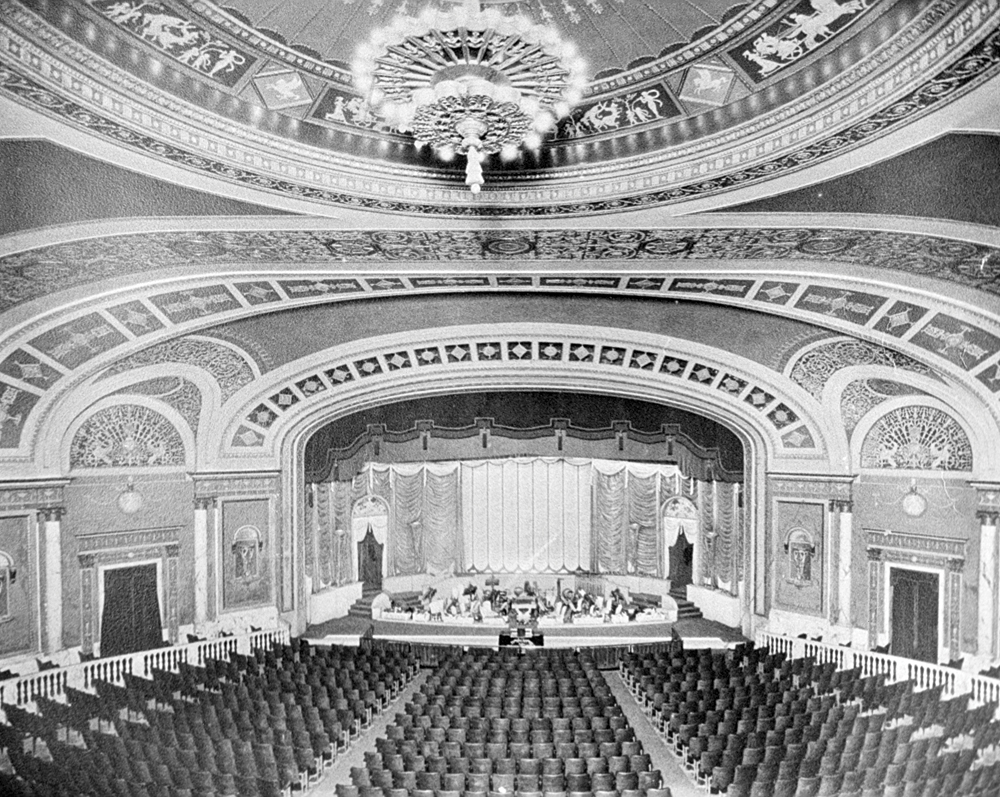
| |
|
The Palace Theater (Dallas) Organ
| |

| |
|
The Palace Theater (Dallas) Organ
| |
Palace Theater Organists
Carl Wiesemann was the first Palace Theater organist when it opened in 1921 (He was also the organist and choirmaster at St. Matthew's Cathedral.) His assistant organist was Dwight Brown. Upon Mr. Wiesemann's resignation, Mr. Brown succeeded him as chief organist and held that position for seven years (except for a few weeks in 1924 when he played in theaters of St. Louis and at the Capital in Dallas) until October 1928. Jack Caldwell was the relief organist for Mr. Brown during the early 1920s. In October 1928 Mr. Brown was succeeded by Billy Muth. Mr. Muth was billed as "The Joy Boy of Melody." He was the main organist until late in 1929 when the Palace suspended live musical entertainment for a brief time.
In January and February of 1924 C. Sharpe-Minor, billed as guest organist and "America's greatest theater organist," played at the Palace. A news article said "novelty and trick effects are used profusely throughout his performance." Mr. Minor returned in the summer of 1924 and 1925. He was then billed as "The Wizard of the Wurlitzer."
Raymond LePere played the Palace Theater organ on a daily WFAA radio broadcast throughout 1927, 1928, and 1929. He was on at 11:30 a.m., and the show was very popular. One news article said about the listeners, "They are writing letters in large numbers asking for their favorite selections and the programs aim for as possible to comply." A photo of Mr. LePere was published in The Dallas Morning News (DMN) on August 21, 1927 (but his name was mispelled).
Johnny Winters was an organist at the Palace Theater in Janauary 1930 when he conducted the first meeting of the Palace Organ Club for children. On June 6, 1930, Mr. Harry Ramsay was pictured in DMN as being the new organist at the Palace. On September 29, 1930, DMN published a photo of Mr. Ramsay with "the new Palace Theater organ which was dedicated Monday night."
Dwight Brown returned in 1932 for another stay at the Palace, but relinquished the position to Joe Proctor, who remained until the organ feature was discontinued around 1933. The console cover was locked, and the regular organ feature was dropped from the program. The Palace resumed the organ feature in Feburary 1942, and Dwight Brown returned and remained many years as the chief organist. Other organists filled in for him occasionally, including the still popular C. Sharpe-Minor.
In 1951 the Palace hired organist Weldon Flanagan on a permanent basis (he had performed there previously). He played the organ throughout the 1950s and 1960s. In 1969 he made the last recording of the Palace organ.
American Theater Organist website, I've found some interesting answers. Actually there were two Palace organs. Both were "mighty" WurliTzers. The first, Opus 411 (each instrument had an opus number) was a type 235. In 1921, it was shipped to the Palace and later repossessed and sold to the Ambassador Hotel in Los Angeles in 1932. It later went to a radio station, WHEC, in 1934 and then to an individual who sold it for parts. The second Palace instrument in 1930, Opus #2125, was a type Publix 1. It was shipped on 8/16/30 to the Palace and had 4 keyboards and 20 ranks of pipes, plus percussion and other playable parts. It was sold in July, 1967 to Weldon Flanagan, who was the organist at the Palace when I went there. He later sold it to Fred Q. Graybeal of Ft. Worth in February 1974. According to WurliTzer records, it was still in playable condition in 1974. So that's the record on the Palace organ and its location. As a sidelight, several other Dallas theaters had Wurlitzers, including the Crystal (organ built 1913), the Old Mill (1915), and the Melba (1921). D. L. Whittle, who I assume was Whittle Music Company, also had a WurliTzer in 1921.
The final disposition of the Palace's Wurlitzer: the console ended up
Most of the pipes and windchests ended up in San Jose's California Theatre restoration in 2004.